Do you remember when you first fell in love with stories? When I was a young boy—before I fell in love with reading, before I sat in front of the TV for hours watching movies—I loved sitting in the kitchen on Sunday mornings listening to my grandfather tell stories about his life growing up in a tiny village on the outskirts of Warsaw. It wasn’t just his stories that drew me into the
Viewing: Blog Posts Tagged with: overcoming obstacles, Most Recent at Top [Help]
Results 1 - 9 of 9
Blog: wordswimmer (Login to Add to MyJacketFlap)
JacketFlap tags: writing process, inspiration, overcoming obstacles, Add a tag
Blog: Write What Inspires You (Login to Add to MyJacketFlap)
JacketFlap tags: Janet Ann Collins, accepting others, Slime & All, Acceptance, children's book review, Guardian Angel Publishing, overcoming obstacles, Add a tag
- Paperback: 16 pages
- Publisher: Guardian Angel Publishing, Inc; large type edition edition (February 14, 2012)
- Language: English
- ISBN-10: 1616332212
- ISBN-13: 978-1616332211
~~~~~~~~~~~~~~~~~~~~~~~~~
Best wishes,
Donna M. McDine
Award-winning Children's Author
Connect with Donna McDine on Google+
A Sandy Grave ~ January 2014 ~ Guardian Angel Publishing, Inc.
Powder Monkey ~ May 2013 ~ Guardian Angel Publishing, Inc.
Hockey Agony ~ January 2013 ~ Guardian Angel Publishing, Inc.
The Golden Pathway ~ August 2010 ~ Guardian Angel Publishing, Inc.
~ Literary Classics Silver Award and Seal of Approval, Readers Favorite 2012 International Book Awards Honorable Mention and Dan Poynter's Global e-Book Awards Finalist
Blog: The Open Book (Login to Add to MyJacketFlap)
JacketFlap tags: interview, Civil Rights, guest blogger, typewriters, overcoming obstacles, integration, African American history, Musings & Ponderings, Pamela M. Tuck, As Fast As Words Could Fly, historical interest, Add a tag
![]() As Fast As Words Could Fly tells the story of Mason, a teenager growing up in North Carolina who becomes one of the first black students to attend an all-white high school. In this guest post, we interview author Pamela M. Tuck’s father, Moses Teel Jr., whose experience during integration inspired the New Voices award-winning title.
As Fast As Words Could Fly tells the story of Mason, a teenager growing up in North Carolina who becomes one of the first black students to attend an all-white high school. In this guest post, we interview author Pamela M. Tuck’s father, Moses Teel Jr., whose experience during integration inspired the New Voices award-winning title.
Lee & Low: In the Author’s Note, it says that you used your “typing talent to defy the prejudices of people who considered [you] inferior.” Did you also participate in a typing contest similar to the one Mason was in? What was that experience like?
Moses Teel Jr.: Yes. In my typing class, we had five-minute timed typing exercises. Five strokes counted for one word and every error took one word away from your total word count. I participated in a lot of these classroom competitions and won. That’s what helped me qualify for the tournament. By the time I had to compete, I felt pretty confident in my skill and I stayed focused by telling myself, “I can do this.”
L&L: How did you handle the hardships you encountered while at Belvoir-Falkland High School? Was there a piece of advice that you were given that inspired you? What advice would you give others who experience some form of prejudice directed toward them?
MT: The encouragement from my family and other members of the civil rights group helped me handle the hardships I faced. My dad had sacrificed a lot during the Civil Rights Movement so as to make a difference. Integrating the schools was one of the most important parts of the Civil Rights Movement in Pitt County during that time. By the time I started Belvoir-Falkland High School, I knew I had to remain humble in order to stay there. I went there for a better education, so I could make a difference in my community.
I can remember one black custodian at the school who inspired me. He would catch me and some of the few other black students outside the school to tell us that he was so proud of us for coming to that school to knock down some barriers. He told us to keep our heads up and to do the best we could.
My advice to others is to realize that prejudice does exist and you’re going to have to deal with it one on one. Just remember to stay humble and treat people the way you would like to be treated. Then you will be able to work your way through it.
L&L: Mason’s story takes place in the mid 1960s, a decade that saw the historic March on Washington, the Birmingham campaign, and the Freedom Summer of 1964. As a teenager, how strong was your sense that you were part of a greater national movement for equality?
 MT: I was well aware that we were part of a national event. During that time, we had gone to a meeting to hear Dr. Martin Luther King Jr. speak, and in part of his speech he told us to go back to our communities and make a difference. By my family being the first to integrate the school system, we felt stronger knowing that we were taking part in an integration movement that was happening all over the country.
MT: I was well aware that we were part of a national event. During that time, we had gone to a meeting to hear Dr. Martin Luther King Jr. speak, and in part of his speech he told us to go back to our communities and make a difference. By my family being the first to integrate the school system, we felt stronger knowing that we were taking part in an integration movement that was happening all over the country.
L&L: Who were your role models growing up? How did these individuals influence your actions?
MT: Two of my role models were Golden Frinks and Reginald Frazier. Golden Frinks was a field secretary for the SCLC (Southern Christian Leadership Conference). I realized how powerful Mr. Frinks was when we visited places that wouldn’t serve blacks, but after mentioning his name, attitudes changed and we were served. Reginald Frazier was a powerful attorney during that time period and I remember when he represented a black family during a racial case. The family couldn’t afford a lawyer, so he took the case for $1 and won.
These two men showed me how their determination to fight for equality could make such a difference, and how justice was more important than money. It was people like them who made me believe that with the right education, I could obtain justice in society.
L&L: When you first began at Belvoir-Falkland High School, was there anyone who surprised you with his or her kindness? Were there other African Americans who you befriended at the school or were you the only one?
MT: I’m afraid I’ll have to say no, there wasn’t, other than the black custodian. I didn’t receive much kindness from the students or faculty at Belvoir-Falkland. There were other black families who also had their children integrating during the same time, and the few of us watched out for one another. We had to stay to ourselves during physical activities because during the pick-up games we were never chosen to play with the white students. In later years, as we remained at the school, we began to be included in more activities.
L&L: Although we now have our first African American president, we still live in a country plagued by many types of inequality. How far do you think our country has come since you were a teenager in the 1960s? Where do you hope we will be ten years from now?
MT: I feel that we have improved about 70% in correcting some inequalities, but there are still a lot of hidden prejudices that have to be dealt with. I hope that ten years from now I can say we have improved 90%.
Filed under: guest blogger, Musings & Ponderings Tagged: African American history, As Fast As Words Could Fly, Civil Rights, historical interest, integration, interview, overcoming obstacles, Pamela M. Tuck, typewriters
Blog: The Open Book (Login to Add to MyJacketFlap)
JacketFlap tags: Holidays, women, Book Lists, women's history month, overcoming obstacles, women's history, dreams and aspirations, Add a tag
In honor of Women’s History Month (and International Women’s Day, which is today!), we’ve pinned a roundup of our titles that feature some pretty amazing women on Pinterest. Check out our board and be inspired to make your mark in history!
Filed under: Holidays Tagged: Book Lists, dreams and aspirations, overcoming obstacles, women, women's history, women's history month
Blog: The Open Book (Login to Add to MyJacketFlap)
JacketFlap tags: biography, nonfiction, painting, black history month, slavery, don tate, overcoming obstacles, Musings & Ponderings, It Jes' Happened, bill traylor, dreams and aspirations, African American interest, united states history, Add a tag
Everyone knows Frederick Douglass and Martin Luther King, Jr., but there are many other African Americans who have contributed to the rich fabric of our country but whose names have fallen through the cracks of history.
We’ve asked some of our authors who chose to write biographies of these talented leaders why we should remember them. We’ll feature their answers throughout Black History Month.
Today, Don Tate shares why he wrote about Bill Traylor in It Jes’ Happened: When Bill Traylor Started to Draw:
Bill Traylor was an “outsider artist.” He learned to draw in much the same way that I learned to paint: by trial and error. He taught himself to draw. Somehow I felt an immediate kinship to Bill. In his day, Bill’s art sold for about 10- to 25-cents and was panned by art critics as “primitive.” Today Bill’s art is collected by top art connoisseurs, and is on display in museums all over the world, selling for thousands of dollars. I love these kinds of stories where the “outsider” gets the glory.
Bill had an inborn – I believe God-given – talent that came forth in time of great need. That spoke to me, too. It supported my belief that all people are born equipped with everything needed to overcome great obstacles in life and do great things.
I think it’s important for children to be exposed to a variety of historical figures. Black history is not limited to the one or two people that are so often written and published about. In addition to civil rights, African Americans have made great contributions to science and technology, arts and literature, sports and entertainment, education and business. Bill Traylor was an artist, but he was also a journalist, though he may not have realized it. And a historian, too.Through his art, he documented an important part of American history that will be appreciated for many hundreds of years to come.
Further reading:
Black History Month: Why Remember Florence “Baby Flo” Mills?
Black History Month: Why Remember Robert Smalls?
Black History Month: Why Remember Toni Stone?
Black History Month: Why Remember Arthur Ashe?
Black History Month Book Giveaway
Filed under: Musings & Ponderings Tagged: African American interest, bill traylor, biography, black history month, don tate, dreams and aspirations, It Jes' Happened, nonfiction, overcoming obstacles, painting, slavery, united states history
Blog: The Open Book (Login to Add to MyJacketFlap)
JacketFlap tags: overcoming obstacles, African/African American Interest, Curriculum Corner, Arthur Ashe, dreams and aspirations, Sports, Tennis, black history month, discrimination, Add a tag
Everyone knows Frederick Douglass and Martin Luther King, Jr., but there are many other African Americans who have contributed to the rich fabric of our country but whose names have fallen through the cracks of history.
We’ve asked some of our authors who chose to write biographies of these talented leaders why we should remember them. We’ll feature their answers throughout Black History Month.
Today, Crystal Hubbard shares why she wrote about Arthur Ashe in Game, Set, Match, Champion Arthur Ashe:
“Arthur Ashe is one of my heroes because he was a great athlete, but he was also a great human being. Tennis propelled him to fame, and he used his stature to bring attention to causes that people might otherwise have ignored. He used sports to help change the world for the better, not to get rich or gain popularity.
“I am most impressed by Mr. Ashe’s efforts to focus the world’s eyes on Apartheid. Through sports, he managed to bring attention to South Africa’s policy of racial segregation, and he was the first major sports figure to do so. Having grown up in segregated Richmond, Virginia, one would think that Mr. Ashe would have confronted Apartheid with anger, but he didn’t. A combination of intellect, tenacity, compassion, and fearlessness fueled his crusade. At the beginning, he was a one-man silent storm, and his approach worked. He drew others to his cause without fire and righteousness, but with reason and hope.

“Mr. Ashe is an example of how one person can truly make a difference in the lives of many. He showed me that someone from the humblest of beginnings can make a monumental change in the way we think about people who are different from us, or who need our help.”
Further reading:
Black History Month: Why Remember Robert Smalls?
Black History Month: Why Remember Toni Stone?
Black History Month Book Giveaway
Filed under: Curriculum Corner Tagged: African/African American Interest, Arthur Ashe, black history month, discrimination, dreams and aspirations, overcoming obstacles, Sports, Tennis
Blog: wordswimmer (Login to Add to MyJacketFlap)
JacketFlap tags: writing despite disabilities, overcoming obstacles, Add a tag
"No pessimist ever discovered the secret of the stars, or sailed to an uncharted land, or opened a new doorway for the human spirit." - Helen KellerEach of us faces some kind of obstacle each day in our work as well as in our lives, and the way we view these obstacles can help or hinder our efforts to get words down on paper and tell our stories.There are writers among us who have full schedules
Blog: wordswimmer (Login to Add to MyJacketFlap)
JacketFlap tags: overcoming obstacles, negative voices, Add a tag
One of the results of writing a novel versus writing a short story is that, aside from the loneliness of the extended stretches of time that you work on your own, you begin to take--by necessity--a longer view of the process. You can't look to finishing your novel as a form of gratification because the end is too far away. But you can reach a certain number of words or pages each day. You can
Blog: PaperTigers (Login to Add to MyJacketFlap)
JacketFlap tags: Children's Books, Debjani Chatterjee, A Special Assembly, Asian People-s Disability Alliance, asthma, David Lumley, Add a tag
 A Special Assembly by Debjani Chatterjee and illustrated by David Lumley was commissioned by the Asian People’s Disability Alliance (UK) to provide information for kids with asthma and their families. You can read here about why the project of raising awareness of asthma in Asian families has become a priority of the APDA.
A Special Assembly by Debjani Chatterjee and illustrated by David Lumley was commissioned by the Asian People’s Disability Alliance (UK) to provide information for kids with asthma and their families. You can read here about why the project of raising awareness of asthma in Asian families has become a priority of the APDA.
Debjani’s story is upbeat. Raj dreams of being a world-class cricketer - but it looks like that’s all he’ll be able to do, dream about it, because he has asthma… until a class pen-friend project brings a famous Indian cricketer all the way to a special assembly at Raj’s school. And guess what? He has asthma too!
The booklet would make a good resource for introducing a school pen-pal project, while raising awareness of asthma at the same time. It is available upon request, with a charge for postage and packing only: see here for further details.



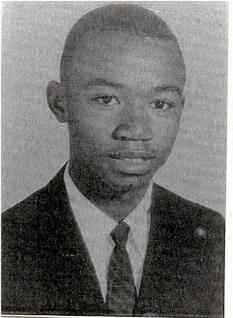
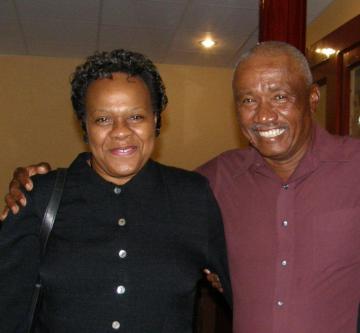

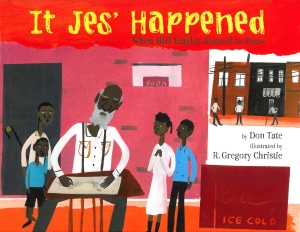

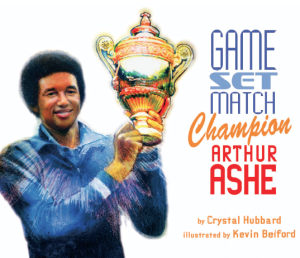
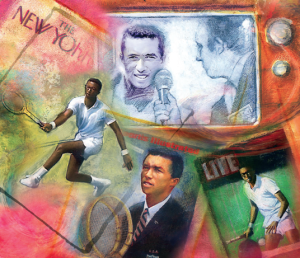
Reblogged this on The Picture Book Pusher.